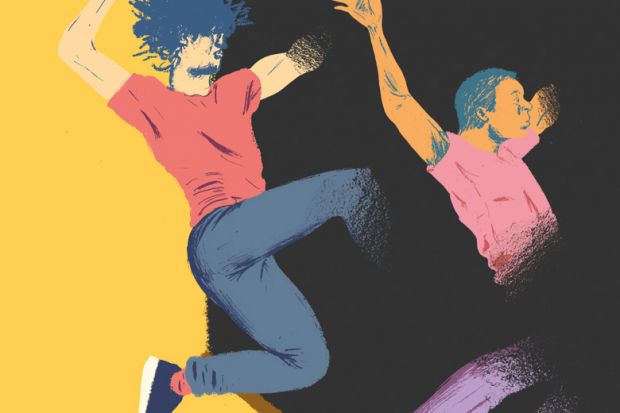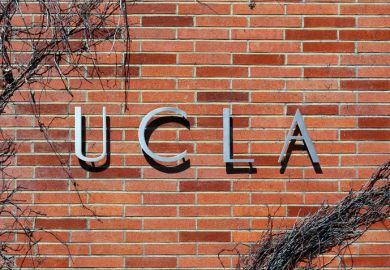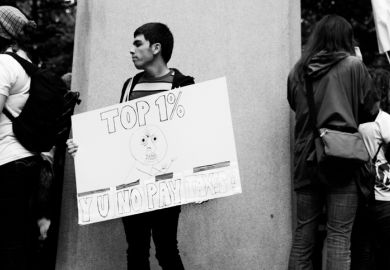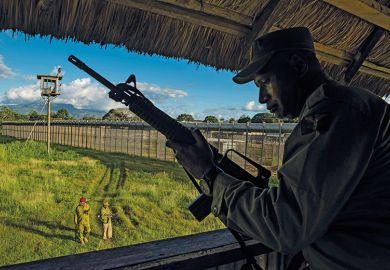Most of my colleagues spent the winter break dreading the start of the spring semester and a new era when students can lawfully carry concealed guns into our classrooms and offices. Texas’ groves of academe, we fear, risk turning into the OK Corral.
However, perhaps because I’m not a metaphysician like Stephen Mumford, who recently called on academics to boycott Texas until the law is changed (“I won’t go to University of Texas while it permits guns on campus”, Opinion, 3 March), I am not unduly concerned about my personal safety. I spent much of the break with a more prosaic dread — namely, that one of my classes would fail to attract enough students, armed or unarmed, to make the auditor’s cut. I was frustrated because the course, called Enlightenment Stories, was one of my favourites. Devoted to the best and brightest of the 18th century, the reading list has stretched and shortened over the years like an accordion. So many brilliant minds; so little time. I could not help but notice, however, that the number of enrolled students was mostly shortening as time passed.
After taking the faint pulse of my course in the new year, I decided on radical surgery. Rather than submit to dread, I would teach it. I cancelled Enlightenment Stories and proposed a course about terrorists. Although I had written about various aspects of political and religious terrorism, I had never thought to offer a course devoted to it. What a fool I had been! After much administrative scrambling, the class appeared under a generic course number and without much advertising – yet within days, in the dead of winter, enrolment reached double digits.
I wish I could take responsibility for this success, putting it down to my Chips-like charisma. But I am the same person, after all, who just a short while ago had been holding a death watch over Enlightenment Stories. Instead, some of the credit must go to the times we live in. Threats and acts of terrorism have been the meat and veg of our news and entertainment industries for years. Has there, in fact, ever been a time when the zeitgeist has been such a one-note wonder? Of all the isms born in the French Revolution – liberalism, communism, conservatism and secularism – terrorism has proved to be the hardiest.
But I believe something else is at work too. Half a century ago, literary critic Lionel Trilling was already sighing over the “Abyss” and the allure the concept held for his students at Columbia University. In his essay, “On the teaching of modern literature”, he observed how none of his “students have been taken aback by what they have read” – not even by the bleakest and darkest literary works. They were, instead, “entertained by moral horror stories”. He had asked them to look into the Abyss, which in turn greeted them: “Interesting, am I not? And exciting, if you consider how deep I am and what dread beasts lie at my bottom.”
Ah, those dread beasts! This is not the first time they have padded across my curricula and preyed on my students. A few years ago, I co-taught a course on nihilism. In contrast to the handful of diehard Francophiles that attended my class on modern French history that same semester, it drew a small crowd of bright-eyed faces. No doubt the course’s title – Is Life Worth Living? – was an attention-grabber. But the title alone cannot explain the difference in enrolment.
There was some attrition during the semester. Not every student has the intellectual stamina or steadiness of purpose to read all of The Brothers Karamazov, The Trial, The Book of Job, Satan in Goray, The Stranger, Endgame and Journey to the End of the Night in a single lifetime, much less a single semester. Yet the majority stuck it out to the end, mano-a-mano with the Abyss. And they were not alone. Other classes devoted to “moral horror stories” – the Final Solution and genocide more generally – are perennial favourites among our students. So much so that, alongside gender, queer, Jewish, women’s and African American studies, we might consider adding “dark studies”. Is it possible that students of such a discipline would be no less engrossed in questions of self-identity and self-definition?
Born shortly after the horrors of Auschwitz and Hiroshima, living under the quotidian terror of nuclear conflagration and stifled by the social conformity of the Eisenhower years, it is not surprising that Trilling’s students were drawn to the Abyss. Is it any different for my own students? They may well suspect that the Enlightenment, with its emphasis on the powers of human reason and the prospect of social progress and political justice, does not have much traction in the 21st century. Optimism – not just the cockeyed sort mocked by Voltaire in Candide, but the more reasonable kinds championed by, say, the American Founding Fathers – is so last year. Recent events, from Paris and San Bernardino to the various forms of hate-filled populism sweeping across Europe and the US, all seem to suggest that the forces of darkism, and not optimism, are in the ascendant.
This reaction is understandable, but also regrettable. That we need to study the Abyss goes without saying. But it should be no less self-evident that this is best done by way of the tools, and hopes, given to us by the 18th century. For this reason alone, next semester, I will try to resurrect Enlightenment Stories: it is, I believe, a truly never-ending story.
Robert Zaretsky is professor of history at the University of Houston and the author, most recently, of Boswell’s Enlightenment (2015).
POSTSCRIPT:
Print headline: Allure of the dark side
Register to continue
Why register?
- Registration is free and only takes a moment
- Once registered, you can read 3 articles a month
- Sign up for our newsletter
Subscribe
Or subscribe for unlimited access to:
- Unlimited access to news, views, insights & reviews
- Digital editions
- Digital access to THE’s university and college rankings analysis
Already registered or a current subscriber? Login




